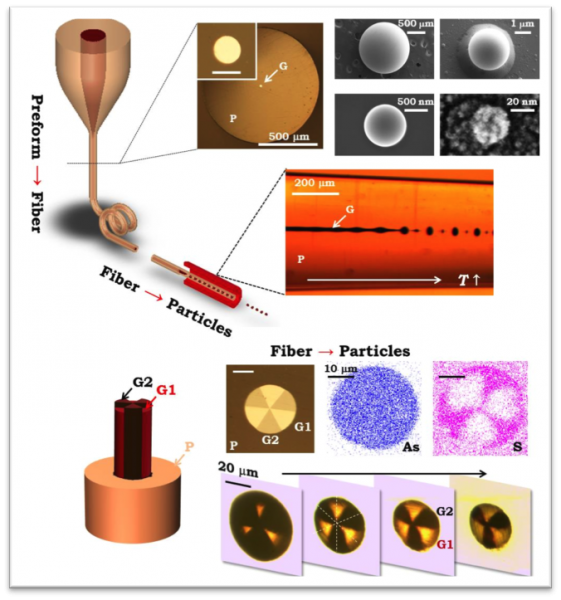From drug delivery to catalysis
to optoelectronics, the need for efficient fabrication pathways
for particles
over a
wide range of sizes, from a variety of materials, and in many
different structures
is
critical to functionality. Researchers in IRG-III have exploited the inherent scalability
of fiber production and an in-fiber Plateau–Rayleigh capillary
instability for the fabrication of uniformly sized,
structured spherical particles spanning an exceptionally wide range
of sizes: from 2 millimeters down to 20
nanometers.
By arranging a
variety of structures and materials in a macroscopic scaled-up
model of the fiber, composite structured spherical particles,
are
produced such as core–shell particles, two-compartment
‘Janus’ particles,
and
multi-sectioned ‘beach ball’ particles (see figure). Moreover,
producing fibers with a high density of cores allows
for an
unprecedented level of parallelization. This new process makes it possible for
the first time to produce nanostructures containing
diverse materials in prescribed complex architectures and
manufactured in
large quantities.
This development has significant implications for photovoltaics,
electronic devices, medicine and health-care, targeted drug delivery, chemical
sensing and catalysis, photonics, and cosmetics.

Top: Instability